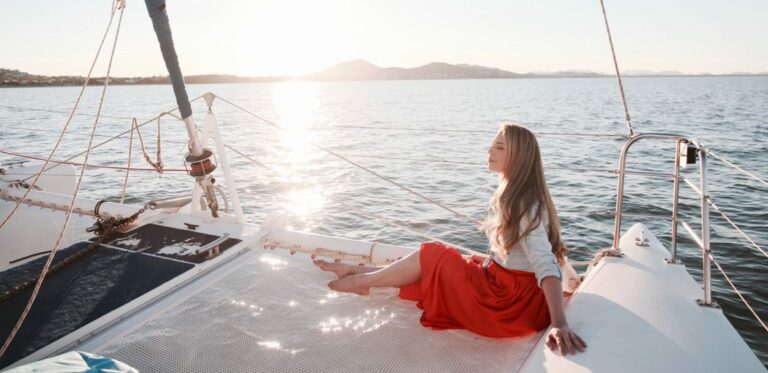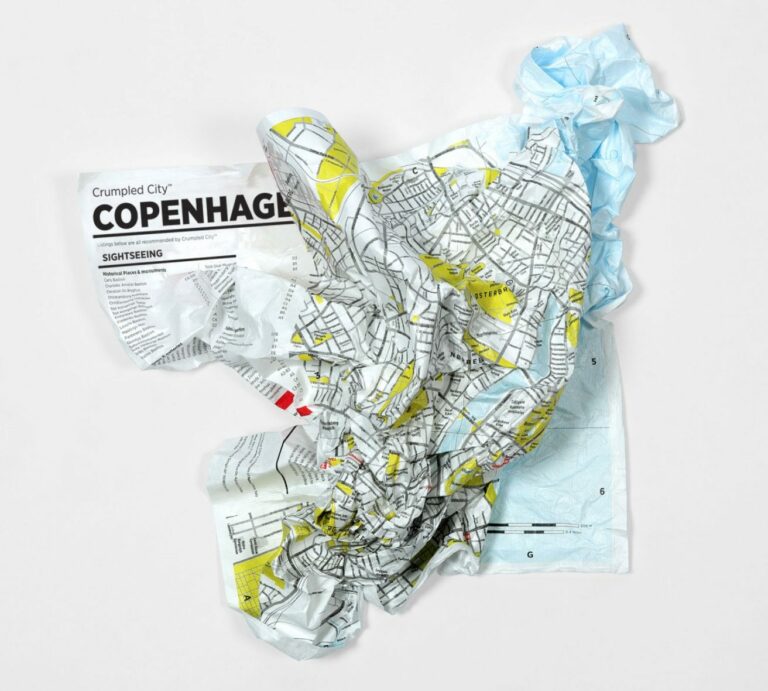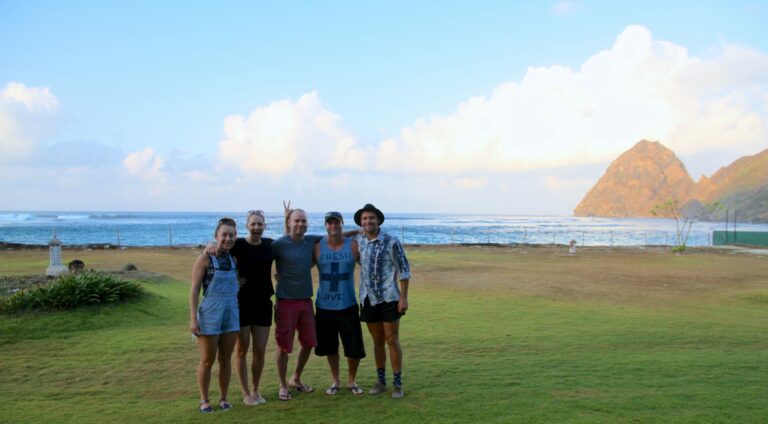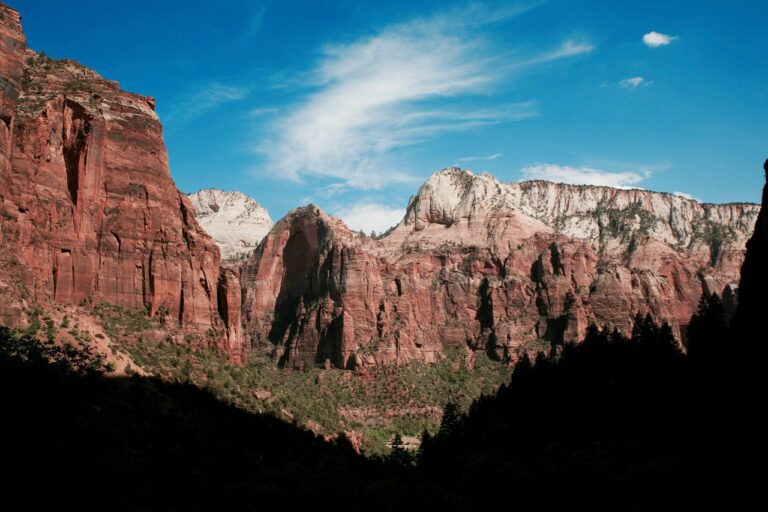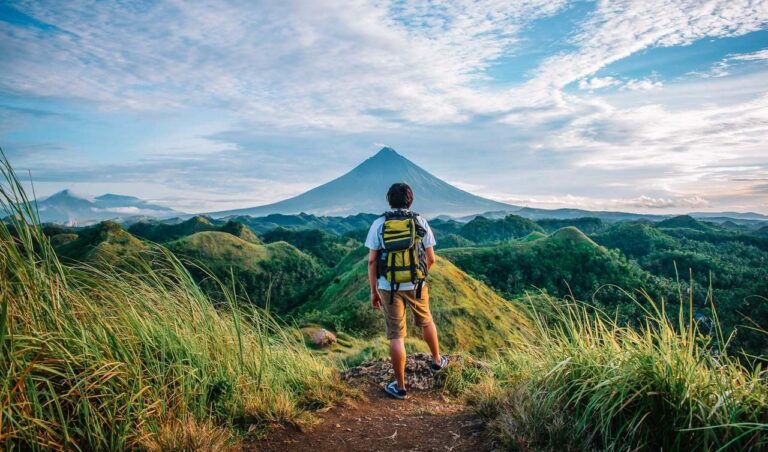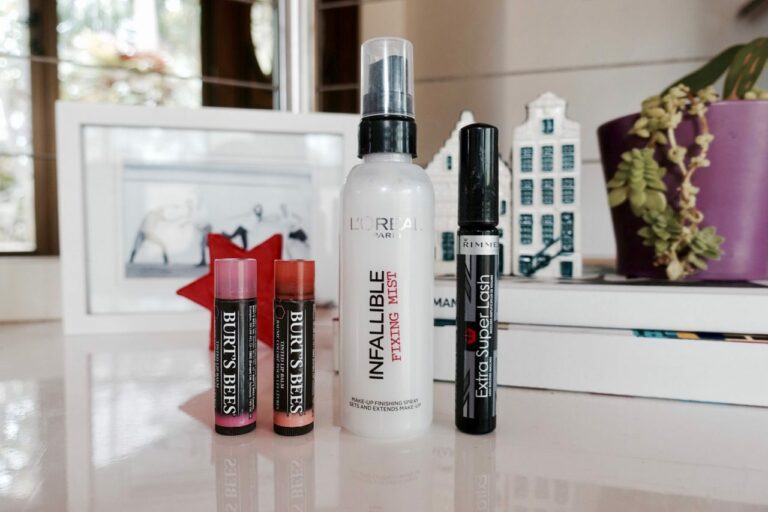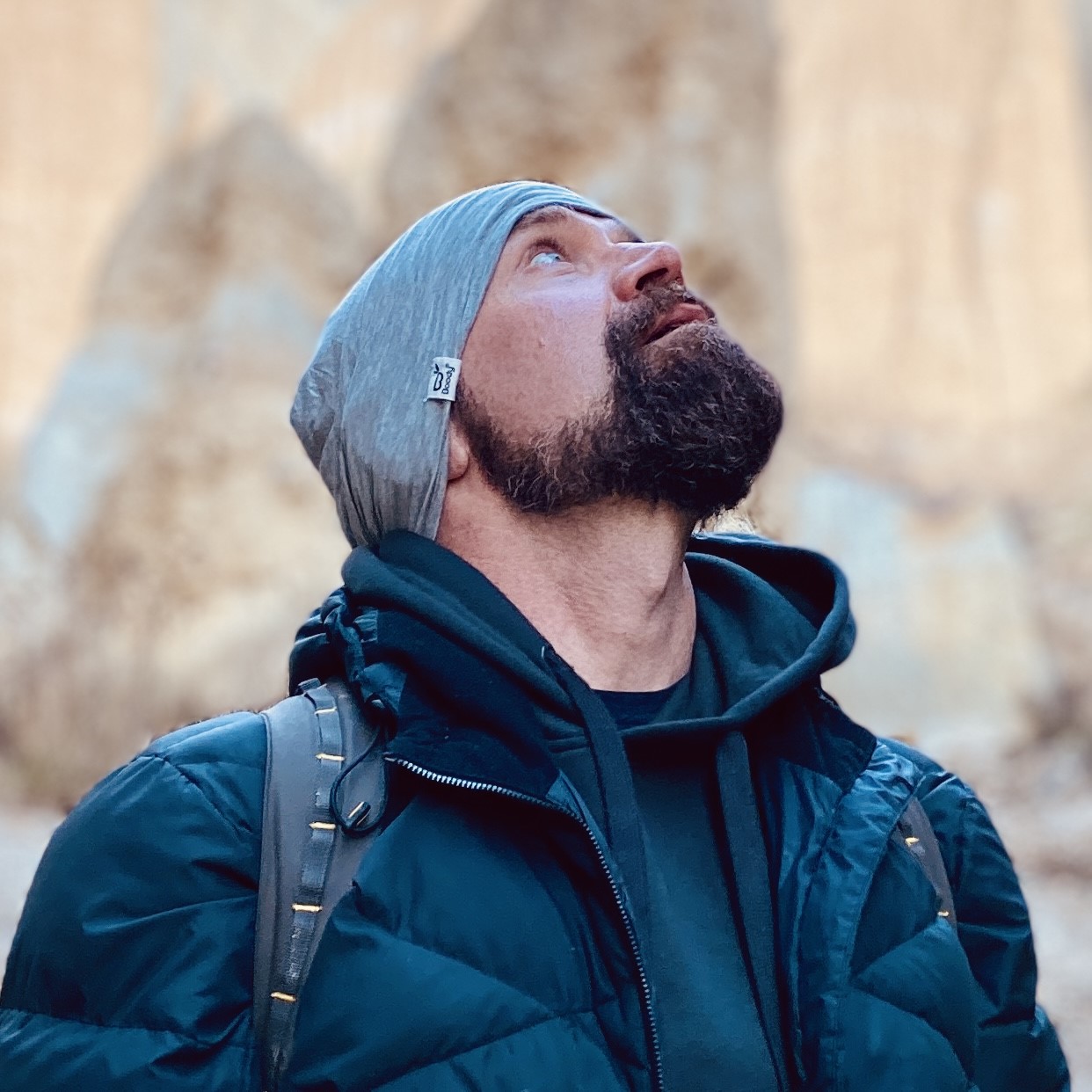The first time I really travelled, a 6 week solo trip through Europe, I had a crappy digital camera. At the time I thought my photos were the bomb, now when I look back at them I cringe and wonder what the heck I was doing. When Matt and I were living in London and travelling a lot, we also only had a digital camera and our iPhones… we got a few okay shots, but both of us always look back at those trips and think, “Mannnn, I wish we had been able to take good photos back then like we can now.”
While travel is about the experience and a good trip isn’t defined by the photo you take, it is wonderful to have beautiful photos to look back on. They help you remember what it felt like to stand there, the smells, the sounds, how the ground felt beneath your feet. A good photo can transport you back in time and help keep the memory of your biggest adventures fresh in your mind, continually inspiring you.
I can’t tell you how many great photo opportunities I’ve missed simply because I didn’t know what I was doing. While I’m not an expert, I’ve certainly learned a lot over the last few years on how to take better photos while travelling. Today, I want to share with you my top tips to help you improve your photography skills and capture those incredible moments and beautiful places while you travel.
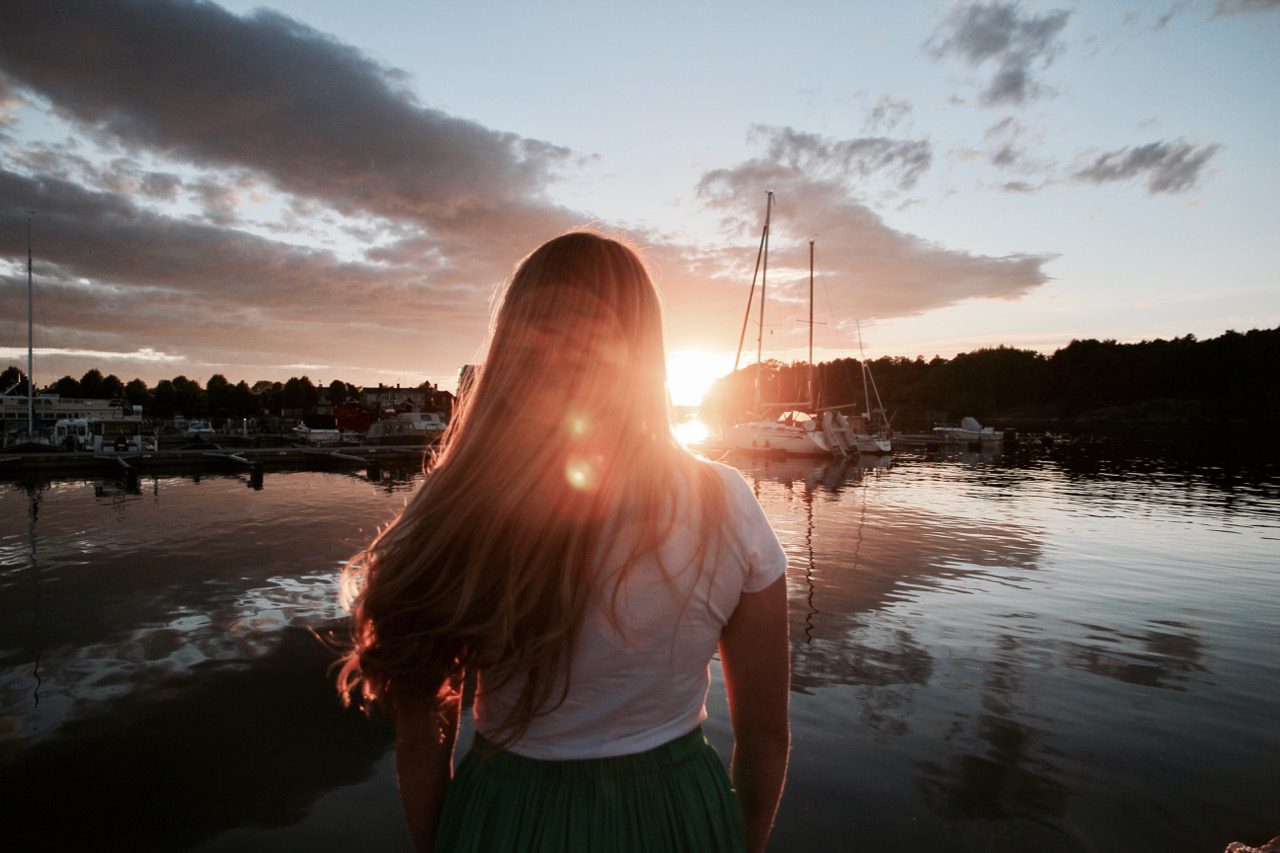
1. Quality equipment is key
There are times in life when the quality of what you’re buying isn’t terribly important and then there are times when it is absolutely key. When it comes to photography equipment, quality is incredibly important. I’ve done it both ways, guys. I’ve done it with a crappy, cheap digital camera and I’ve done it with an amazing camera, the quality camera wins every time.
It’s important, of course, to live within your means and stick to a budget you can afford. But please, be sure to buy the best quality equipment you can afford to buy. If it means waiting a little longer and saving up for something great, do it – it’s worth the wait! Keep in mind you may be able to take advantage of duty-free and claim tax back at the airport in some situations, which can save you money. Depending on where you’re travelling to, it may also be beneficial to buy your gear overseas (it is imperative you research this thoroughly though and make sure you’re not being scammed or voiding warranties etc).
Matt and I invested in a Canon EOS 7D and haven’t looked back since. We went with Canon because Matt has used them before and really likes them, simple as that. We bought the 7D because it has the camera and film capabilities we need and was within our budget. It is, hands down, the most important thing I carry with me when I travel and I treat it like it is my child.
2. Use those high-quality photos
Well, hold on now, that seems simple enough? Use the photos I took? Yea, it does sound simple but it’s something easily missed. It can be so easy to take a few photos on your fancy camera and then get too lazy to transfer them to your phone to share on social media. Don’t let those great photos go to waste, guys.
I download my travel photos on my laptop, where I edit them and get them ready for their big debut. Then I transfer them to my iPhone, either by adding them to an album and syncing them to my phone, uploading them to Dropbox and downloading them onto my phone using the app or sending them to myself through a FaceBook private message. It just depends on how much time I have and how many photos I need to get on my phone.

3. Don’t over-edit
It can be really tempting to go absolutely nuts with the editing and make your photos look absolutely perfect. I try my best to keep my photos realistic and relatable, so people know that what they’re looking at really does exist. I’d hate to post a photo that is too perfect and have someone visit the same place on my recommendation, only to be incredibly let down because it looks nothing like my edited photo.
I try to keep my editing to a minimum by enhancing the natural beauty of the place or adjusting the photo so it really reflects what the place looked like. Sometimes I get my camera settings wrong and the photo looks dull while in real life it was really bright and colourful, in those instances I edit the photo so it matches how it really looked on the day. I also use the cropping tool to make sure I cut out all the crap that’s crowding a shot or detracting from the focus of the photo.
I really encourage people not to photoshop themselves, meaning editing their body shape, skin or appearance. You are beautiful exactly as you are, there’s no need to use editing tricks to change your appearance.
4. The rule of thirds
You can use the rule of thirds to make sure your photo is balanced and the eye is drawn to the important parts of the shot. The rule of thirds is based on placing the interesting points of the subject in the intersections or along the lines of a 9-square grid (the grid you see on Instagram, also below). This means your photo is balanced and easier for people to interact with, based on the idea people’s eyes generally fall to the (invisible) intersection points, rather than the centre of an image. In short, it makes it easier for people to view your photo and it makes it naturally more appealing to the eye.
Here’s an example of the rule of thirds in action. On the left, I’ve ignored it altogether and centred the image. On the right, I’ve used the rule of thirds to position my body along one of the lines and intersection points.
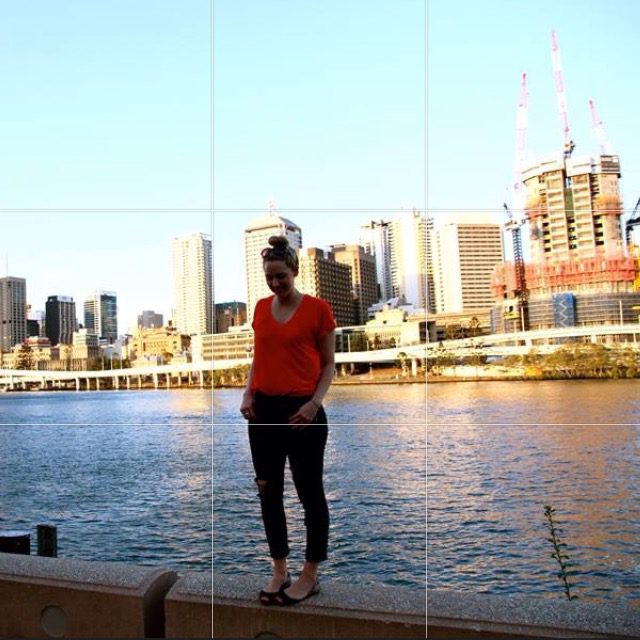
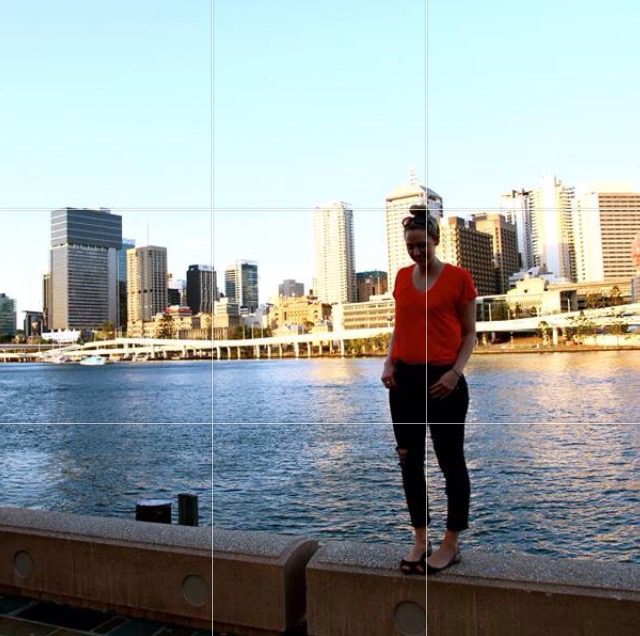
5. Think outside the box
Don’t be confined to just taking the same photo you’ve seen taken before, posted on a website or social media. Capture a place in a new light, find a way to capture a destination from a new perspective, your perspective! Try shooting from different angles, get down low and shoot up or get up high and shoot down. Experiment with different camera settings or features, try taking a photo of your travel-buddy doing something in the shot that’s a bit different. Constantly look for new ways to capture a place, challenge the process of regular photography and push the envelope! The beauty of digital cameras is you can always delete the photos that didn’t work out.
6. Wait for the light to be right
The best time to take photos is when the sun is soft and golden, making for beautiful photos with a magical sparkle to them – it is also called ‘the golden hour’. When does this occur? I find the best time to take photos is at sunrise and sunset. If the sunsets at 6pm, I might head out to take photos at 4:30pm and capture different places as the light changes.
I also love experimenting with night-time shots and a long exposure, meaning the shutter is open for longer and letting in a lot of light. That’s how you get those super-cool photos you see people take at night where the lights are really bright or are one long stream of light, like this photo of mine:
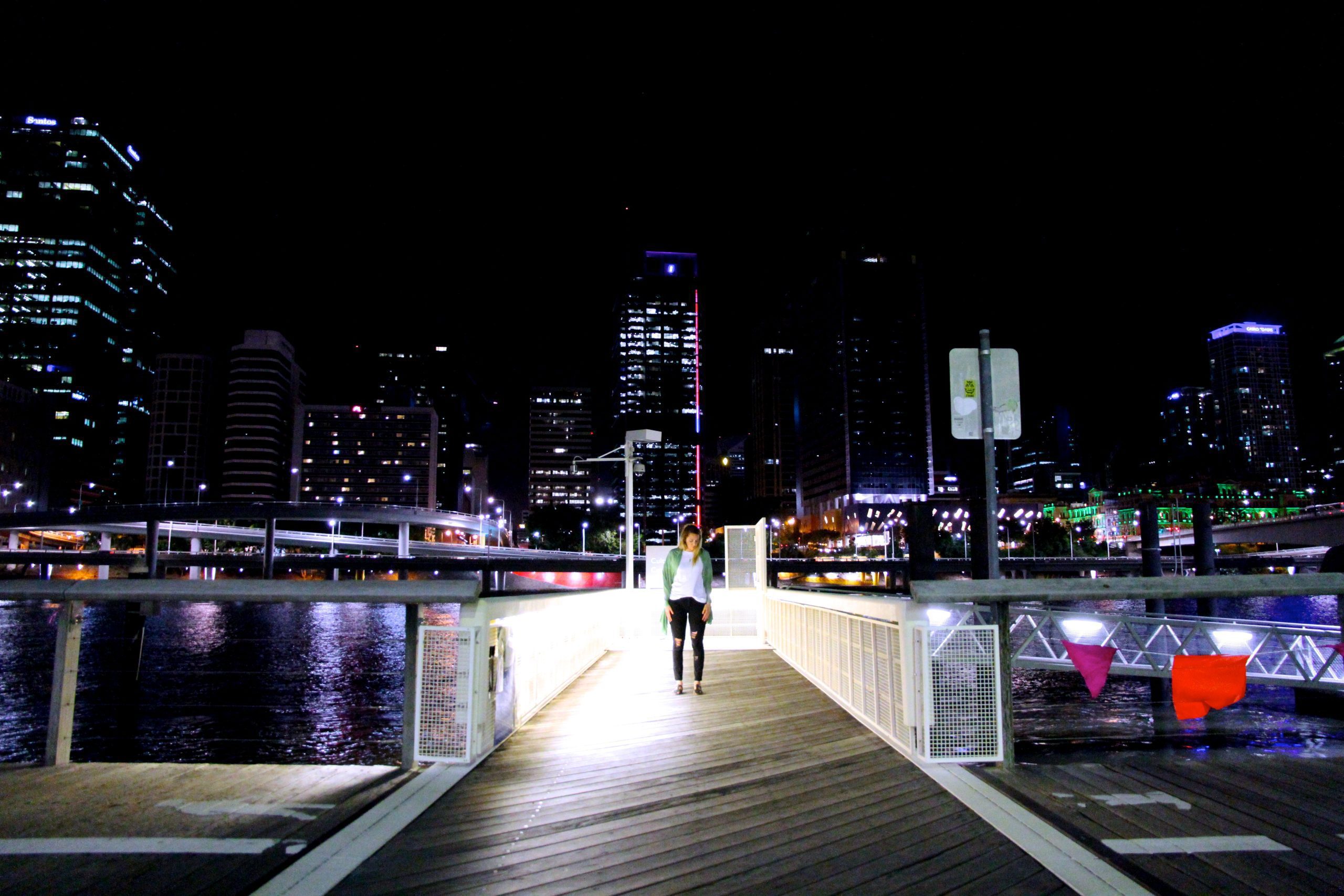
7. Cameras gonna shake, shake, shake
Yes, my friends, the camera is gonna shake… why? because your hands are shaky! No matter how hard you try/hold your breath/meditate while photographing, you will not be able to stop your hands from shaking. If you’re taking a photo in broad daylight, shaky hands aren’t such a big deal. But if you’re taking a photo in softer light or in the evening, it’s a real mood-killer.
So, get creative and find a way to stabilise your camera. Of course, the best way is to use a tripod, especially for night photography. But, if you don’t have a tripod handy, you can always find another way to stabilise your camera for the shot. I’ve used an upside-down washing basket before, a couple of takeaway coffee cups stacked on top of each other (for extra strength and support), upturned flower-pots and even wheelie bins!
8. Ask the locals for tips
Make friends with locals of the place you’re visiting and ask them where the best views are, where the best-hidden locations are or if they know somewhere great you should visit to take photos. We were once taken to the top of a hill, led to the back of a church and sat on a wall in the back of the church garden, overlooking Lisbon, just because we connected with a local tour guide who took us under his wing. It’s a view we never would’ve seen without his help.
It also pays to do a little google search before you go, try to find bloggers, travellers or locals of the area who love photography and have shared their favourite photography spots online.
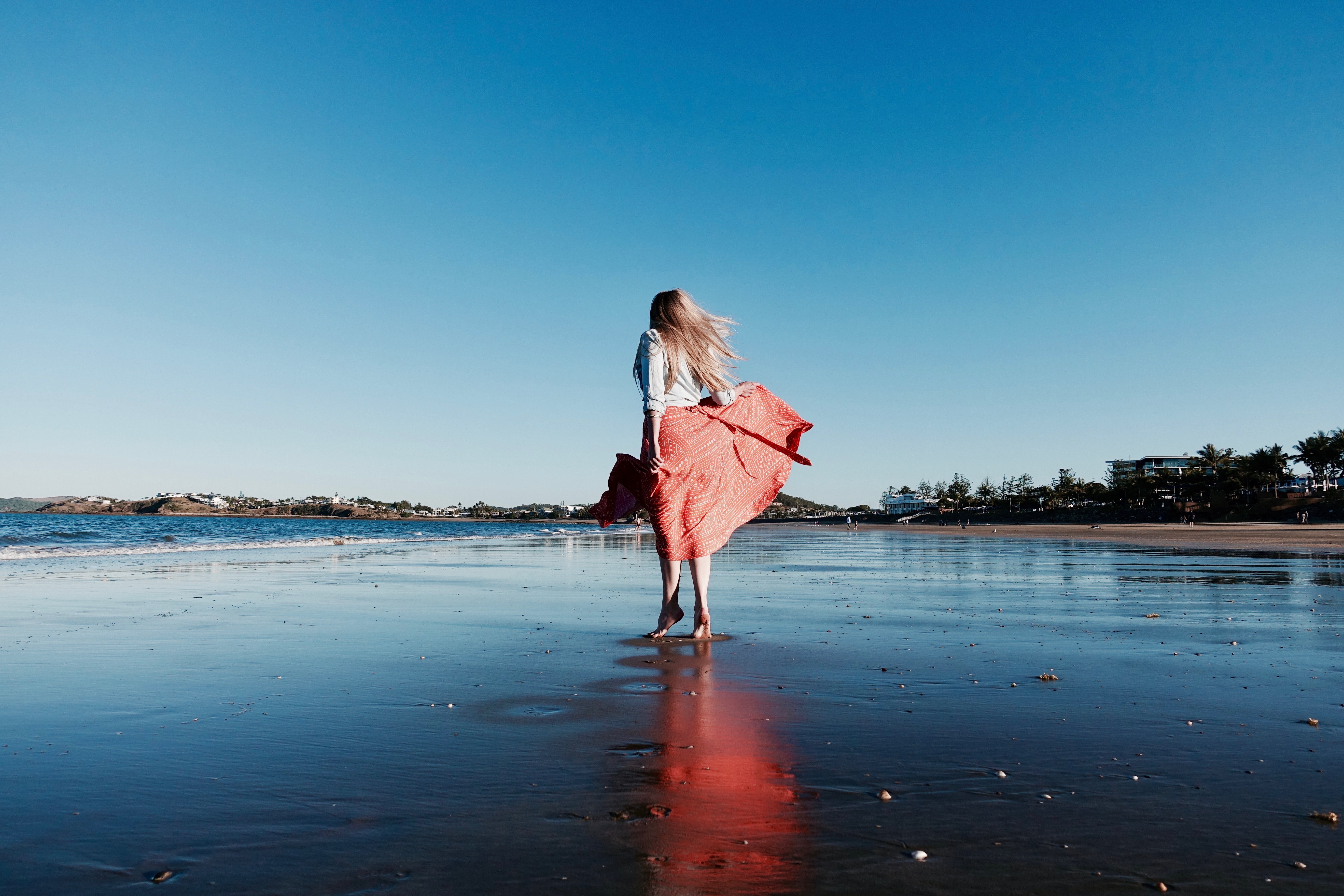
9. Find your style and be true to it
There are so many brilliant photographers out there it can be really easy to look up to them and want to take photos just like them! I know I’ve felt a bit of self-imposed pressure at times to take a photo a certain way or edit it to look a certain way, just because I’ve admired how someone else has done it. It’s cool to look up to people and be inspired by them, but it’s also really really important to find your talent, your voice and your expression too!
Don’t be afraid to take a risk, see things from a different angle or develop your own style. If you love the way something looks then share it! You’ll be amazed at how many people can like your particular brand or style of photography, especially if it is something new or different. Let your freak flag fly, guys! Be creative and be weird! Challenge the process!
10. Practice makes perfect
Yes, it’s true… it really does. We all have to start somewhere, so make sure you do make a start before you travel. Practice your photography skills around the house, at the park, take a walk around your city and imagine you’re a tourist, ask to photograph your friends or their pets for practice. Do whatever it takes to log some serious hours of practice on your camera and you will definitely reap the rewards when you travel and the pressure is on to take a good shot, quickly before you get run over by an out-of-control tuk-tuk!
Other resources:
- My friend, Lisa Michele Burns, of The Wandering Lens, is an incredible photographer and has worked with Vogue Australia, Lonely Planet and The Sunday Traveller! On her site, Lisa shares absolutely invaluable information and insight about photography including how to creatively compose travel photos, how to take better beach photos and more. Visit her site and check out her brilliant guides here.
- The Digital Photography School have put together this great guide on ’20 Photography Tips Every Traveller Must Know’.
- Brooke Saward of World of Wanderlust and blogger extraordinaire has put together this guide on ‘How to take better travel photos’.
Best travel resources for your trip!
If you found this post useful, please use the affiliate links below. I’ll make a small commission at no extra cost to you. Rest assured, these are the products and services I love and use. Read the disclaimer for more information. Thanks for your support! – Matt.
Agoda – hotels
Booking.com – hotels
Cover-More – insurance
DiDi – rideshare
Motorhome Republic – RVs
Discover Cars – rentals
Simify – SIM cards
Skyscanner – flights
Surfshark – VPN
TourRadar – tours
Welcome Pickups – transfers

